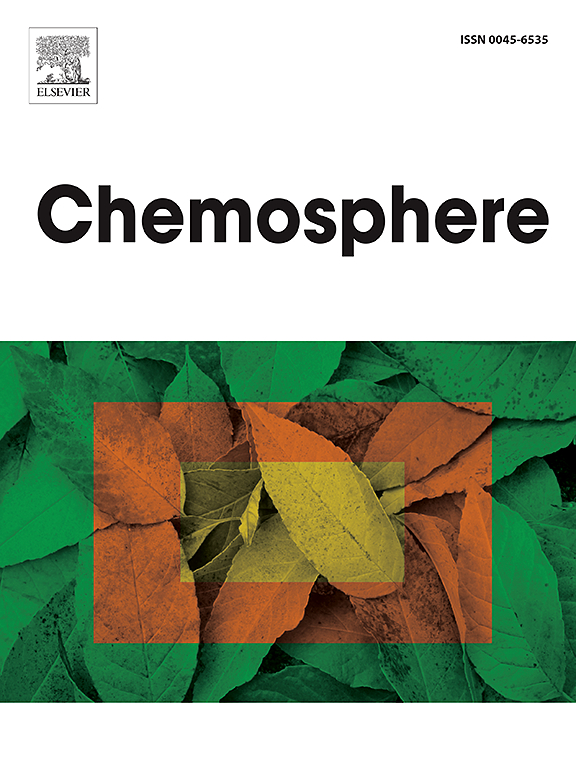Short- and medium-chain polychlorinated alkanes in the air of Athens, Greece
IF 8.1
2区 环境科学与生态学
Q1 ENVIRONMENTAL SCIENCES
引用次数: 0
Abstract
The atmospheric occurrence and partition between the gas and particulate phase of short- (PCAs–C10-13) and medium-chain (PCAs–C14-17) polychlorinated alkanes (PCAs) were investigated during two sampling campaigns in Athens city, Greece. The concentrations of PCAs ranged between 1.46 and 43.6 ng m−3 in the gas phase, and between 5.8 and 40.3 ng m−3 in the particulate phase, which were within the reported levels in Europe. Significant seasonal variation was observed for PCAs–C10-13 and PCAs–C14-17 in the gas phase. C10Cl6–7 and C14Cl6–8 were the predominant short- and medium-chain congeners, respectively. Gas-phase PCAs exhibited significant positive correlation with temperature, and negative correlation with relative humidity. Diagnostic ratios of medium to short-chain PCAs suggested that ΣPCAs in total suspended particle (TSP) mainly originated from local sources. Furthermore, the relationship between partitioning coefficient Kp and the subcooled liquid pressure (PL°) was investigated. Moreover, Positive Matrix Factorization (PMF) analysis was employed to identify the potential ΣPCAs groups of sources. Finally, the estimated risk of inhalation exposure to ΣPCAs for adults and children was found to be low.

求助全文
约1分钟内获得全文
求助全文
来源期刊

Chemosphere
环境科学-环境科学
CiteScore
15.80
自引率
8.00%
发文量
4975
审稿时长
3.4 months
期刊介绍:
Chemosphere, being an international multidisciplinary journal, is dedicated to publishing original communications and review articles on chemicals in the environment. The scope covers a wide range of topics, including the identification, quantification, behavior, fate, toxicology, treatment, and remediation of chemicals in the bio-, hydro-, litho-, and atmosphere, ensuring the broad dissemination of research in this field.
 求助内容:
求助内容: 应助结果提醒方式:
应助结果提醒方式:


